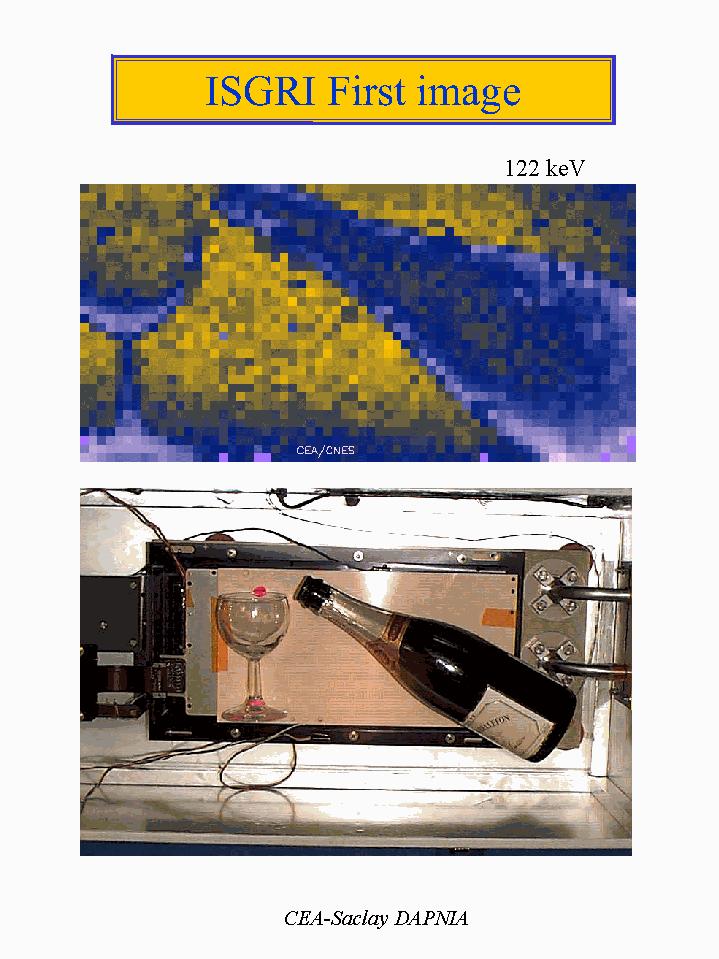
 Credit: ESA/IAS/CEA-SACLAY
Credit: ESA/IAS/CEA-SACLAY
Shadows and Light
Ordinarily, an object's image can be formed by bringing light rays to a
focus, either by refraction (using a lens) or reflection (using a mirror).
But what can you do if the type of light you're interested in won't reflect
or refract? This is the problem facing astronomers who study high energy
X-ray and Gamma Ray radiation. One solution is to use a technique called
"coded aperture
imaging"; in coded aperture imaging, a "mask" is placed in front of the
detector (usually a CCD is used as the detector), and an image is reconstructed by studying the
variations in the patterns of shadow and light produced on the detector by
the mask. The International
Gamma-Ray Astrophysics Laboratory (INTEGRAL) will conduct high
resolution spectroscopy and wide-field imaging of X-ray and Gamma Ray
sources. To image these sources, INTEGRAL will use a coded mask instrument
called IBIS
(Imager on Board INTEGRAL Satellite). The upper image of the champagne
bottle and the glass in the figure above was produced by one of the IBIS
detectors called the ISGRI; the lower image shows how these objects would
look using an ordinary refracting imaging system (your eye). INTEGRAL is
the second Medium Sized Mission of the European Space Agency's Horizon 2000
scientific program.
Last Week *
HEA Dictionary * Archive
* Search HEAPOW
* Education
Each week the HEASARC
brings you new, exciting and beautiful images from X-ray and Gamma ray
astronomy. Check back each week and be sure to check out the HEAPOW archive!
Page Author: Dr. Michael F.
Corcoran
Last modified April 12, 2000


